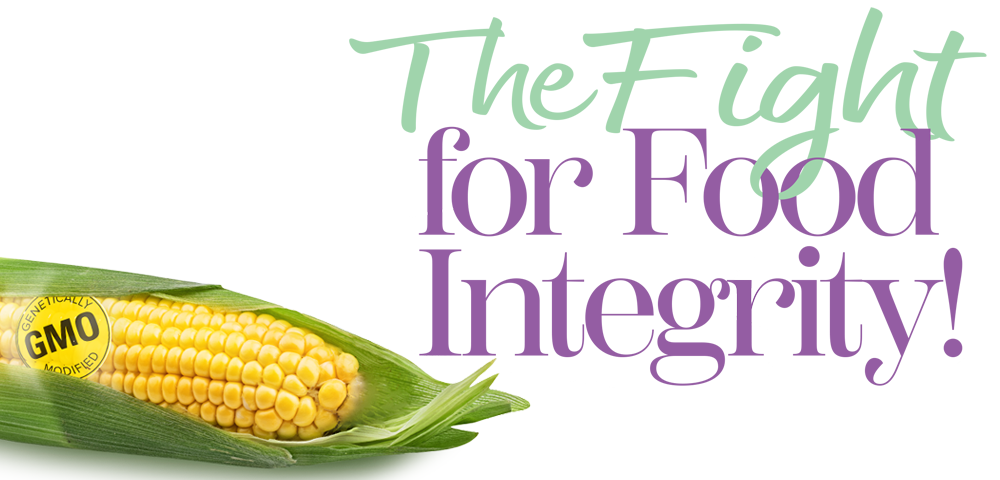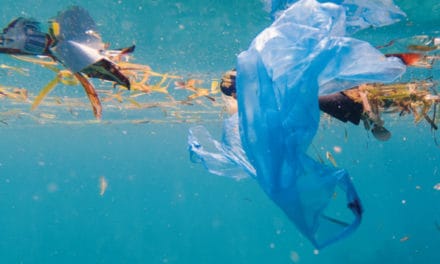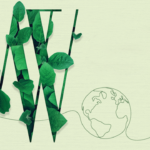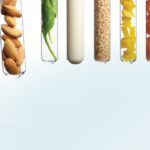
In Canada, biotech companies can now make and release new patented GE foods into our food supply without telling the government, farmers, or consumers.
Growing up, I attended a small school in the countryside, and it was in this environment that many of my passions took root. I fondly remember the school’s vegetable garden and the magic of planting seeds and eagerly awaiting their sprouts. The sunflowers never ceased to captivate me as they transformed into towering plants. The school was next to a farm, and we used to go for walks in the neighboring fields, sometimes playing hide and seek amongst the stalks of corn or picking at the soybean pods. In hindsight, we were likely playing in fields of GMO crops where we often saw the spray truck apply chemical pesticides and herbicides. It wasn’t until years later that I realized the gravity of what we were exposed to.
Getting started
I grew up vegetarian and was passionate about protecting animals, especially farm animals. When I was 11, I began researching factory farming, and came across the animals’ diets, typically corn and soy. That’s when I saw the acronym that changed my life; GMO, short for genetically modified organisms. After researching, I became concerned about the health and environmental implications of growing and consuming GMOs and the pesticides and herbicides used in their production. I learned that products containing GMO ingredients were not labeled. Without a label, there is no transparency and we don’t have the right to know if the food we are consuming contains GMOs. To this day mandatory labeling in Canada and the U.S. is not required, leaving consumers in the dark. I wanted to know what I was putting into my body, so I decided to take action. My actions started small but quickly grew to creating KRTK.
One night after a global march against Monsanto, Kevin O’Leary popped onto our TV. He heavily criticized the people protesting for GMO labeling and Monsanto accountability, going as far as saying, “Stop eating. That’s the solution.” That’s when I decided to challenge him to debate me publicly. The exposure from the debate propelled me into a life of speaking and campaigning globally to spread awareness about the problems in our food system.
What are GMOs?
Genetically modified (GM) seeds are created in labs. Genes are taken from one species and inserted into another to obtain a desired trait or characteristic. This type of genetic engineering doesn’t occur in nature and is entirely dependent on human manipulation. About 70% of the processed foods on store shelves in Canada contain GM ingredients, such as corn, soy, canola, and sugar from sugar beets. GM crops also include cotton, Hawaiian papaya, zucchini and yellow squash, a variety of GM apples, alfalfa, potato, and salmon.
There are two main types of GMOs on the market – pesticide-producing, where a toxin is modified into the seed to create an internal “pesticide,” and herbicide-resistant. Herbicide-resistant crops can withstand glyphosate herbicides, so a farmer can spray as much herbicide onto the crop as they want without damaging it. Herbicide then ends up in our water systems, soil, and as residue in our food. These seeds are patented, and are meant to be sold with associated products. Think of how profitable it is to patent seeds, barring farmers from saving the seeds so they have to buy them year after year, in addition to purchasing herbicides, pesticides, and fertilizers. This profit often comes at the expense of people and the planet. For instance, physical exposure to glyphosate has been linked to a variety of cancers.
The industrial food system has wreaked havoc on our health and the environment. GMO crops are typically grown in monocultures, where the same variety is planted spanning acres and acres. This strips the soil of essential nutrients and leads to more erosion. These GM crops are grown throughout the world and are impacting sensitive areas, such as the Amazon. Rainforests are cleared to grow soy for exports and animal feed. The chemical-intensive practices used in these areas threaten the delicate environments and ecologically important areas.
While many people don’t associate agriculture with environmental or climate change issues, it has a huge impact. The soil releases carbon into the atmosphere when using intensive practices like tilling, monoculture, and high chemical loads. On the other hand, if the soil is properly nourished, it is one of the most significant carbon sinks we have after our oceans and rainforests, with the ability to absorb and store gigatons of atmospheric carbon.
New gene-edited food, no regulations
This year, Canadian regulations surrounding gene-edited (GE) foods changed. Similar to the U.S. regulations passed in 2020, new GE foods will no longer face any regulation or safety oversight by the government. The safety of our food will be left up to the judgment of the corporations making the product. Gene-editing is slightly different from traditional GMOs, as no foreign DNA is added. It is still genetic engineering as they remove or alter the plant’s natural DNA to bring out characteristics or traits.
This is one of the greatest threats to the food system and biodiversity of our time. Plants pollinate, so this could even impact natural varieties. This lack of oversight disregards the importance of preserving the genetic integrity of nature and traditional seeds, and without labeling in Canada and the U.S., we could harm organic and conventional farms. Once these new patented, unregulated, and untraceable varieties are out in the fields, cross-pollination is inevitable. If organic farmers have their crops contaminated with patented varieties, they could be sued for patent infringement, or lose organic certification completely. This decision from the government could essentially be the end of many organic farmers’ livelihoods. On a global scale, there are also unaddressed concerns with trade, like conflicts with countries that require labeling or have bans on GM crops.
The solution beneath our feet
While biotech companies create false solutions for the problems they created in the first place, there are natural solutions in front of us. Microbes already care for the soil and produce the necessary nutrients without genetic tampering. By using regenerative, organic agricultural practices, we can nourish the soil, produce more highly nutritious food, absorb atmospheric carbon to combat climate change, preserve biodiversity, and support local food economies and farmers. More farmers are starting to adopt these practices and rekindle their connection to the land and the food.
This positive sector of our food system is under attack and we need to stand for the farmers stewarding the land, the microbes we depend on, and the seeds that support life.
Growing food, building community
My hope largely lies in helping future generations form a greater connection with our planet. With KRTK we want to help people young and old fall back in love with nature, food, pollinators, and the ground that connects us all. That’s why we’re excited that this year, KRTK was granted a permanent community garden location. The land was an unused grass park for over 30 years, and now it breathes a life of its own. We work hands-on with volunteers, teaching about food system issues and the solutions. We are going back to our roots to plant organic seeds of hope and freedom. Many didn’t have a community to call their own, and now this garden is becoming a hub where people are connecting with each other and themselves. While our community garden in Toronto is a small, positive example of change, the reality is that globally our food and environment are under attack. Corporations are attempting to patent and own the very makeup of our earth. If we want a future where we can pass traditional seeds on to our children, and ensure that our soil is not contaminated by patented microbes; a world where we can grow clean nutritious food in fertile soil, and support biodiversity, we have to collectively stand up now, before it’s too late.











